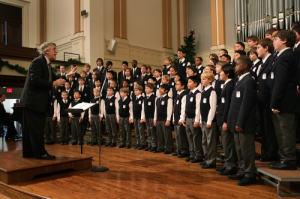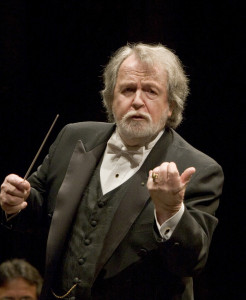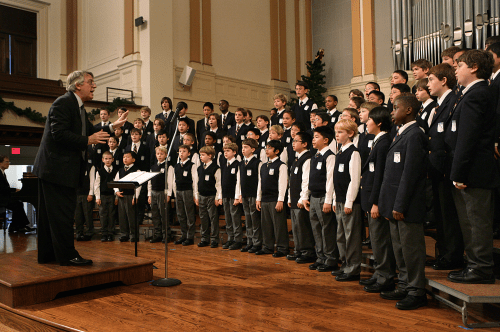
The Midsummer Mozart Festival took us through the mind of Mozart in its 40th summer festival held at the Bing Concert Hall on July 27, inviting diverse talent like Russian soloist Anna Yelizarova, pianist Seymour Lipkin, conductor Ian Robertson and the San Francisco Boys Chorus.
The festival opened with a rendition of the Overture to “The Abduction from the Seraglio,” K. 384. Overall, the piece had a very fluid and dynamic relationship between the softer sounds of the woodwinds and strings and the bolder sounds of the percussion, accompanied with a smooth buffer between the beginning and end. What started off as a whispery and delicate play of the woodwinds and strings quickly turned into a captivating burst of fast-paced staccatos and tempo.
Next, the festival continued with “Missa Brevis in C Major (Spatzen Mass),” K. 220 accompanied by the vocal work of the San Francisco Boys Chorus. While this piece is relatively limited in that it only includes a small selection of instruments, it did not fail to provide a dynamic play between vocals and instruments. With mostly the violins grounding the piece, this six-part work offered a dynamic range of sound and emotion from triumph to solemnness. Accompanied with a seamless play between higher and lower vocal pitches, the piece offered us a different look into Mozart’s work.

This was followed by a rendition of “Laudate Dominum,” K. 339, a piece with a similar theme of religious praise. The festival made an excellent decision in following this piece after “Missa Brevis” because it served as an interesting buffer to a very diverse piece.
To end the first half of the festival, three selections from Mozart’s opera “The Magic Flute,” K. 620 were chosen. First was “Oh Isis und Osiris,” then the “Trio of the Spirits” and lastly, “Priests’ March.” Overall, the three pieces worked fluidly with each other, generally showcasing the brass sections.
After a short intermission, the concert wasted no time in immersing us back into the workings of Mozart. Originally written for the opera “La clemenza di Tito,” “Parto, parto,” K. 621 gives a dramatic narrative unlike any other. What really set this piece apart was the beautiful relationship between the clarinetist and the mezzo-soprano opera singer Yelizarova, which brought out a level of emotional depth that really made Mozart’s vision come alive.
To end the concert, the Midsummer Mozart Festival played “Concerto in d minor for piano and orchestra,” K. 466, with Seymour Lipkin on piano. This three-part piece was a dynamic piece that kept us on our feet. Lipkin perfectly led us into a complicated journey of light, delicate sounds to more somber notes. The piece, overall, offered an intricate relationship between the piano and the rest of the orchestra. This was an unpredictable piece, filled with twists and turns of contrasting emotions. With a soft and airy feel in some parts, it was often followed by a more intense and dramatic sound. It ended the festival on a strong note, and received a loud standing ovation accompanied by “Bravo!”
From beginning to end, the Midsummer Mozart Festival offered a musical experience like no other. It gave us a glimpse at a diverse range of Mozart’s work from the beginning of his career to the very end. While Mozart’s work is hundreds of years old, the festival was able to create an experience in which Mozart masterpieces feel contemporary. The festival helped us form a newfound connection towards these timeless classics.
The Midsummer Mozart Festival ran from July 19 to July 27, 2014. For more information about the festival, please refer to their website.
